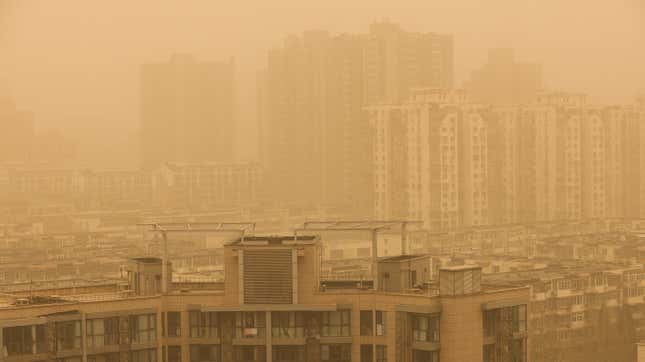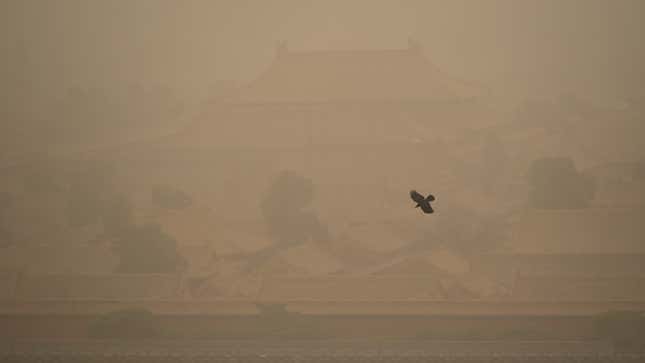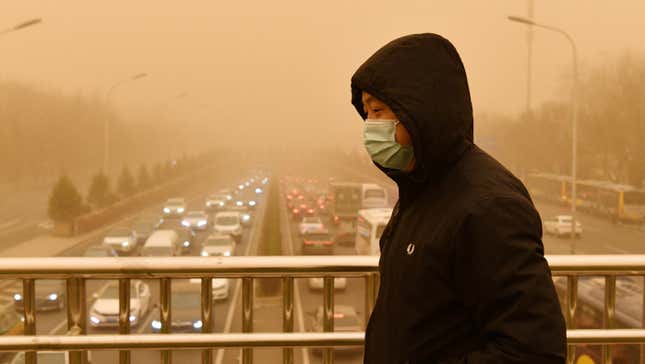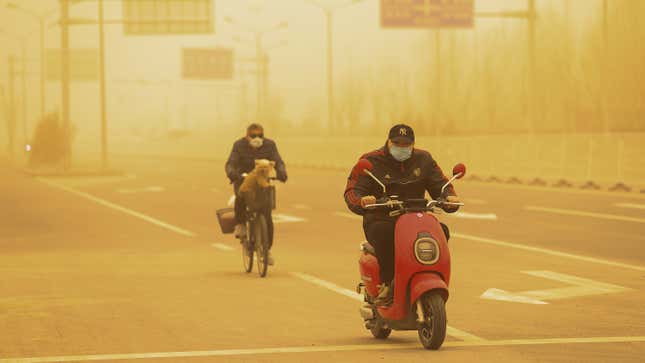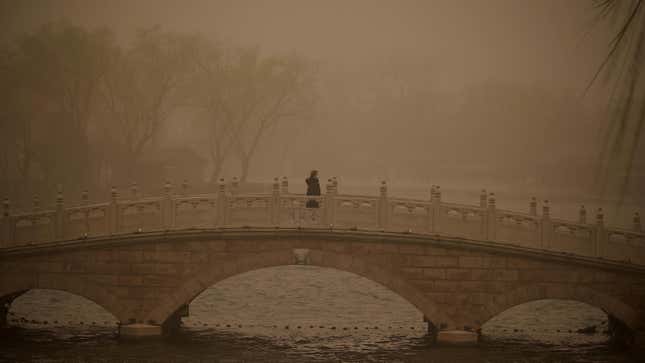
Beijing is currently hidden under a thick, yellow blanket of noxious smog. The dust originated in a Gobi Desert sandstorm, which has killed at least six people in Mongolia. Now, northwest winds have blown the dust through across Inner Mongolia into the Chinese provinces of Gansu, Shanxi, and Hebei.
The golden haze has created surreal scenes in Beijing that feel like something out of Blade Runner 2049. But it’s also caused an air quality emergency and hampered visibility as the region suffers through one of its worst dust storms in a decade. Here are some bizarre scenes from around the city—and the impacts all the dust and pollution is having on residents.
